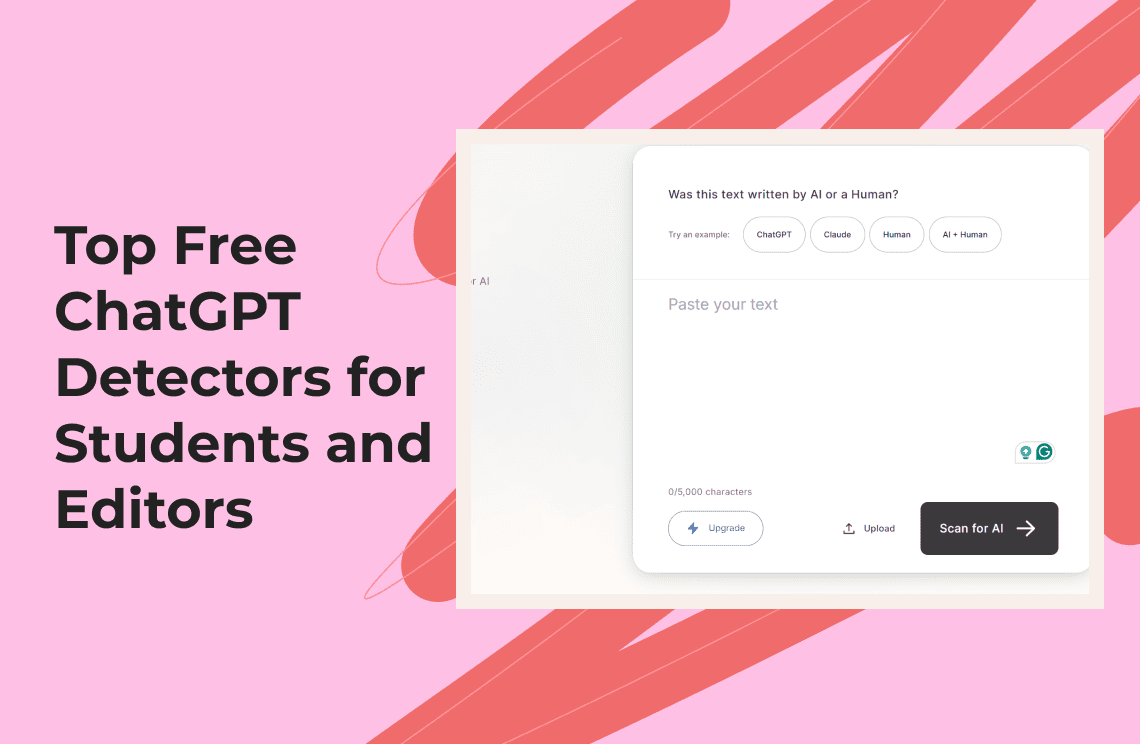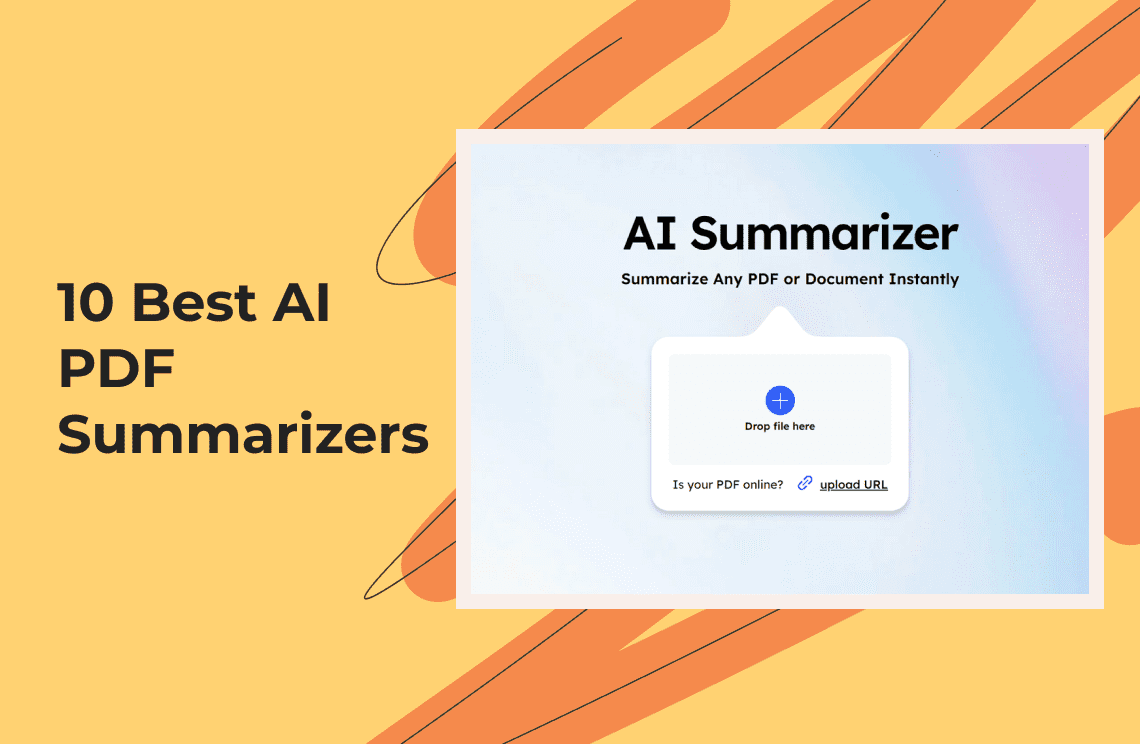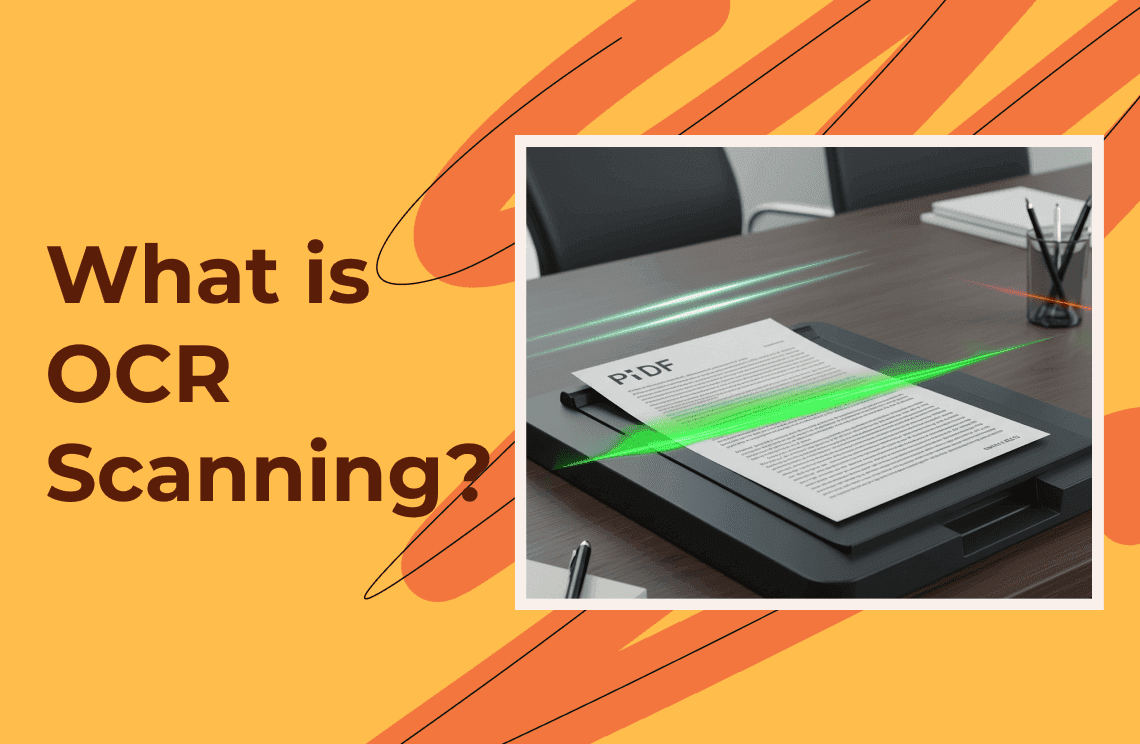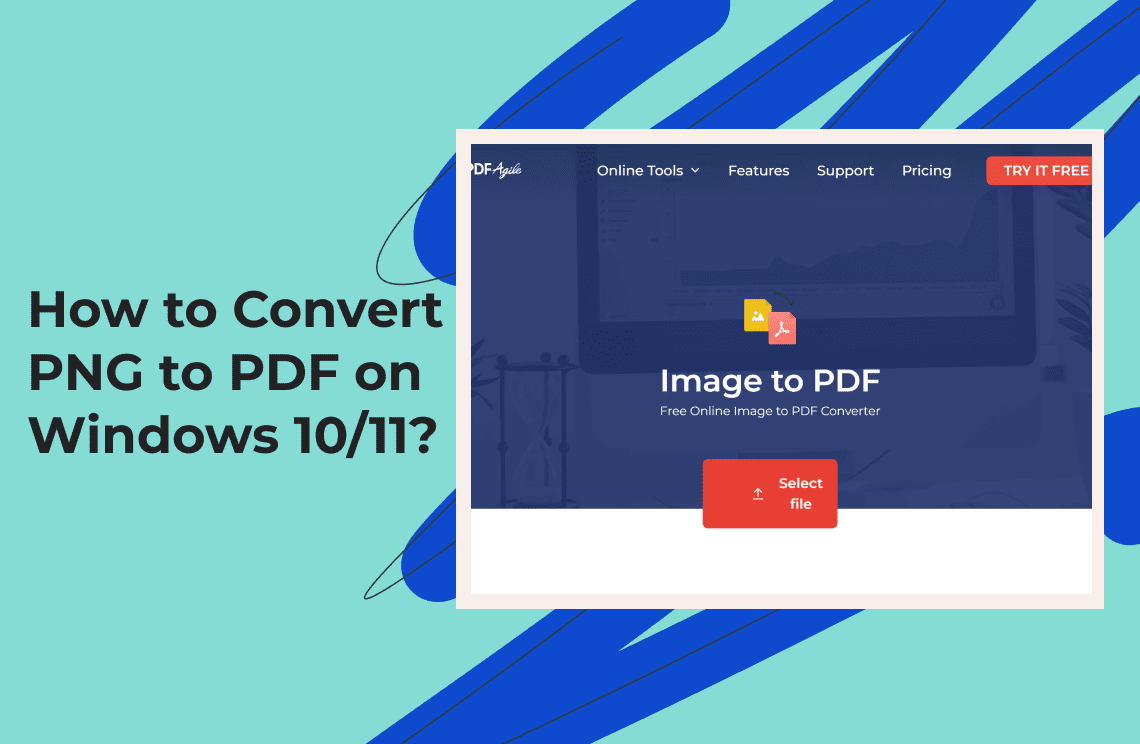The rapid evolution of AI writing tools like ChatGPT has transformed academic and editorial workflows, but it also creates new challenges around authenticity and integrity. For students and editors, detecting AI-generated content is now essential. In 2025, a range of powerful, free ChatGPT detectors will be available, each with unique strengths and limitations. Many students fail their courses and are rated low in their research work due to their reliance on AI tools. If you are a project supervisor, a teacher in higher education, or an educator at any level, you will need to know how to differentiate between original work and one written using AI tools. In this informative write-up, we will show you some of the great tools you can use to detect if content is written using AI tools. Bear in mind, however, that a ChatGPT detector and other AI detection tools are not 100% reliable. They are known to sometimes mark originals as AI-generated content. You should bear this in mind when using any of these tools.
1. GPTZero
GPTZero stands out as a leading AI detector in 2025. It is also a popular choice among ChatGPT detectors for students used today. The tool is widely adopted in academic and editorial settings for its high accuracy and user-friendly design. It can analyze texts you provide sentence-by-sentence, offering detailed feedback and it equally comes with integration with educational platforms like Google Classroom and Canvas.
Pros:
- Detects content from ChatGPT, GPT-4, Claude, and LLaMA.
- Provides sentence-level analysis and writing feedback.
- Integrates with major educational platforms.
- Zero false positives on human text in benchmarking.
- Its accuracy is 98.6% accuracy with 0% false positives in 2025 benchmarks.
Cons:
- One limitation of the tool is that its free plan allows up to 10,000 words per month only.
The tool is perfect for students and educators who are looking for reliable, classroom-integrated AI detection.
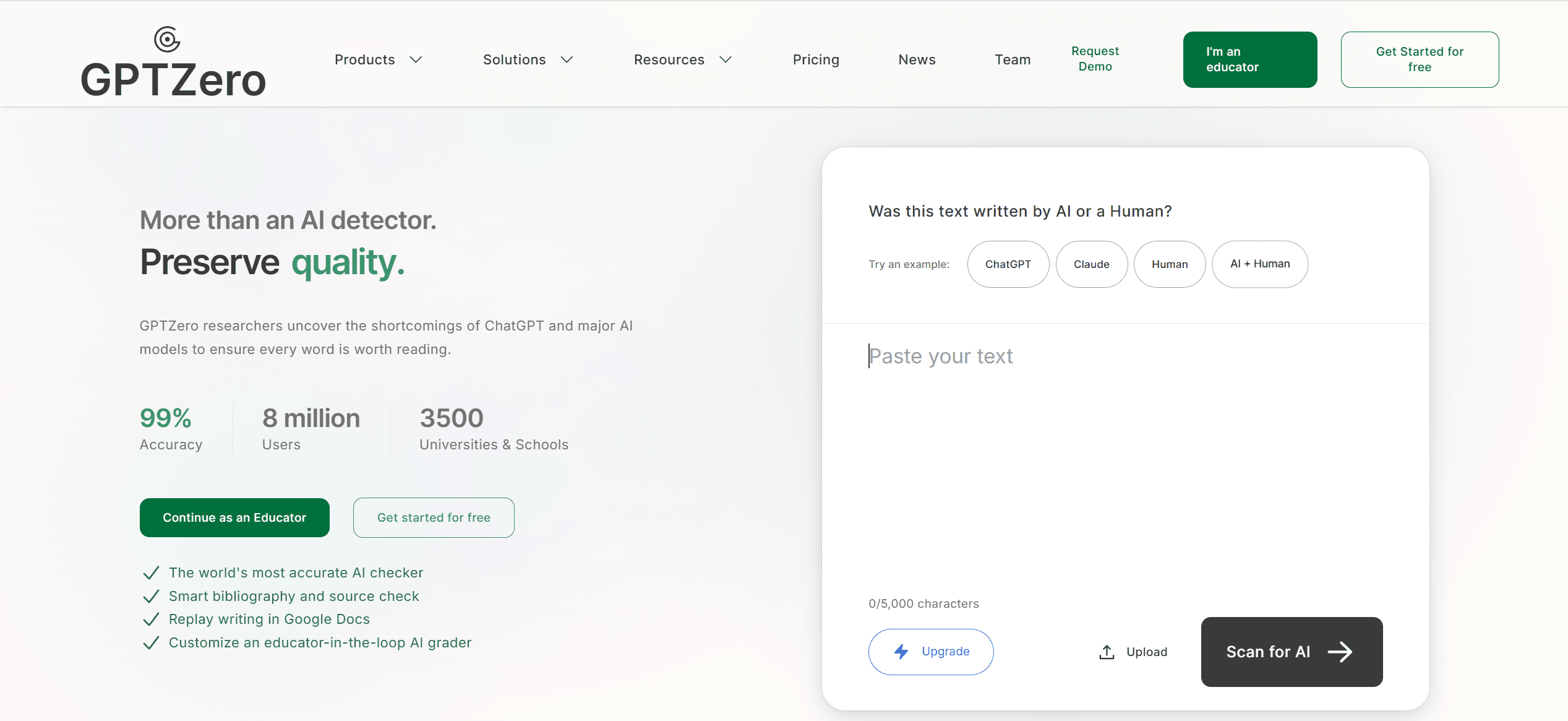
2. Detecting-AI.com
Detecting-AI.com is among the best tools you can find when looking for a ChatGPT detector for any written content. The tool offers comprehensive AI detection with color-coded sentence highlights and detailed reporting, enabling the end-user to easily understand the results obtained. The tool also supports a wide range of AI models and this makes it a highly versatile tool. It is the perfect tool for students and editors, including tutors seeking to detect a content’s originality.
Pros:
- Highlights AI-generated sentences with color-coded percentages.
- Supports detection for ChatGPT, Claude, Gemini, and more.
- Includes plagiarism checks and detailed reports.
- Its accuracy is 99%, tested on over 365 million samples.
Cons:
- The free version of the tool does not support batch processing.
The tool can work perfectly for editors and students who need detailed, report-driven analysis. The detailed results it offers make it outstanding.
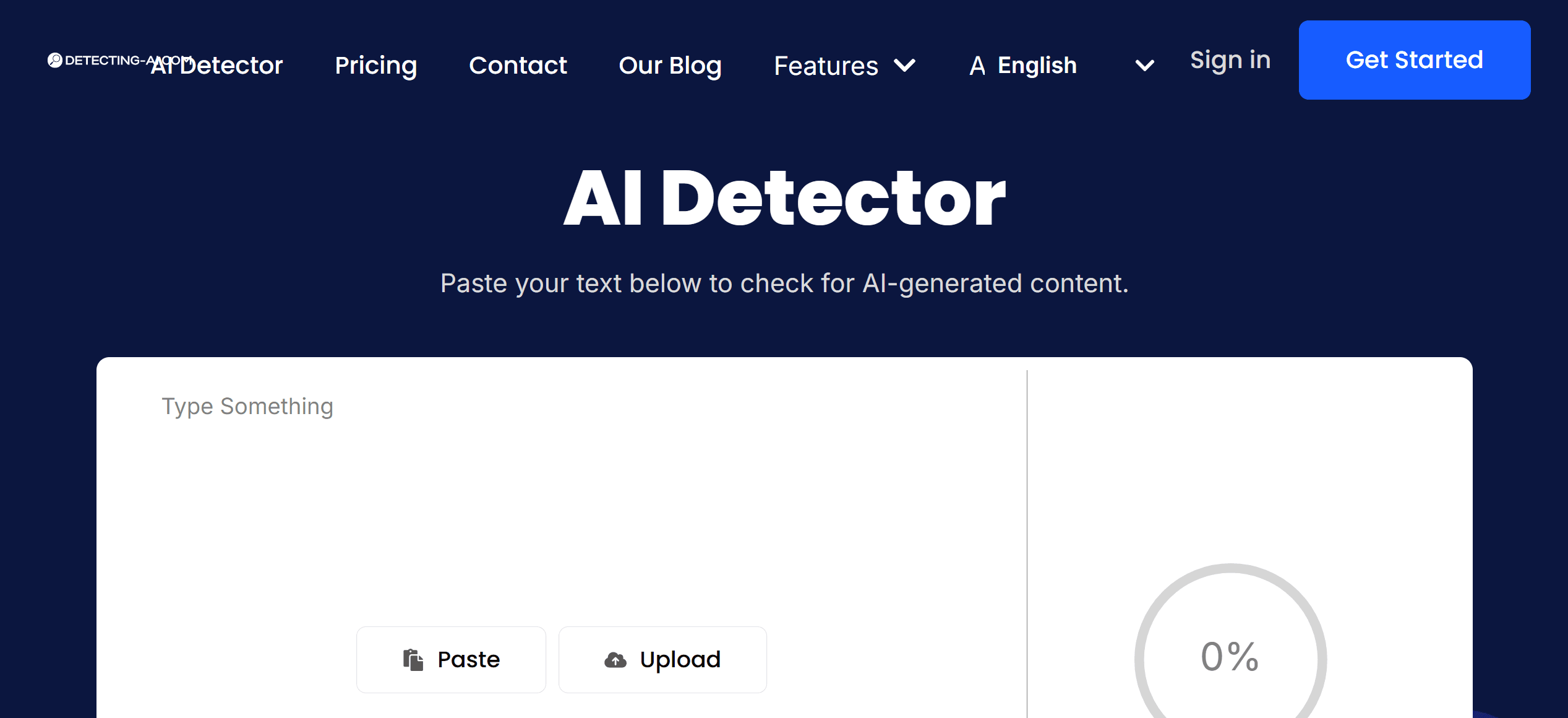
3. Turnitin AI Detection
Turnitin is a staple in academic integrity, making it one of the best ChatGPT detectors for students. The tool is designed to combine AI detection with traditional plagiarism analysis. Also, its color-coded confidence scoring can help educators and students quickly assess the likelihood of content being generated through AI.
Pros:
- Color-coded confidence scores (Red: High, Yellow: Moderate, Blue: Low).
- Integrates with institutional systems for seamless workflow.
- Combines AI and plagiarism detection.
- Its accuracy is also very high at 98–100% for standard AI text; and lower for heavily edited or hybrid content.
Cons:
- Requires institutional access; not available as a standalone free tool for individuals.
The tool is perfect for students and educators in institutions with Turnitin subscriptions.
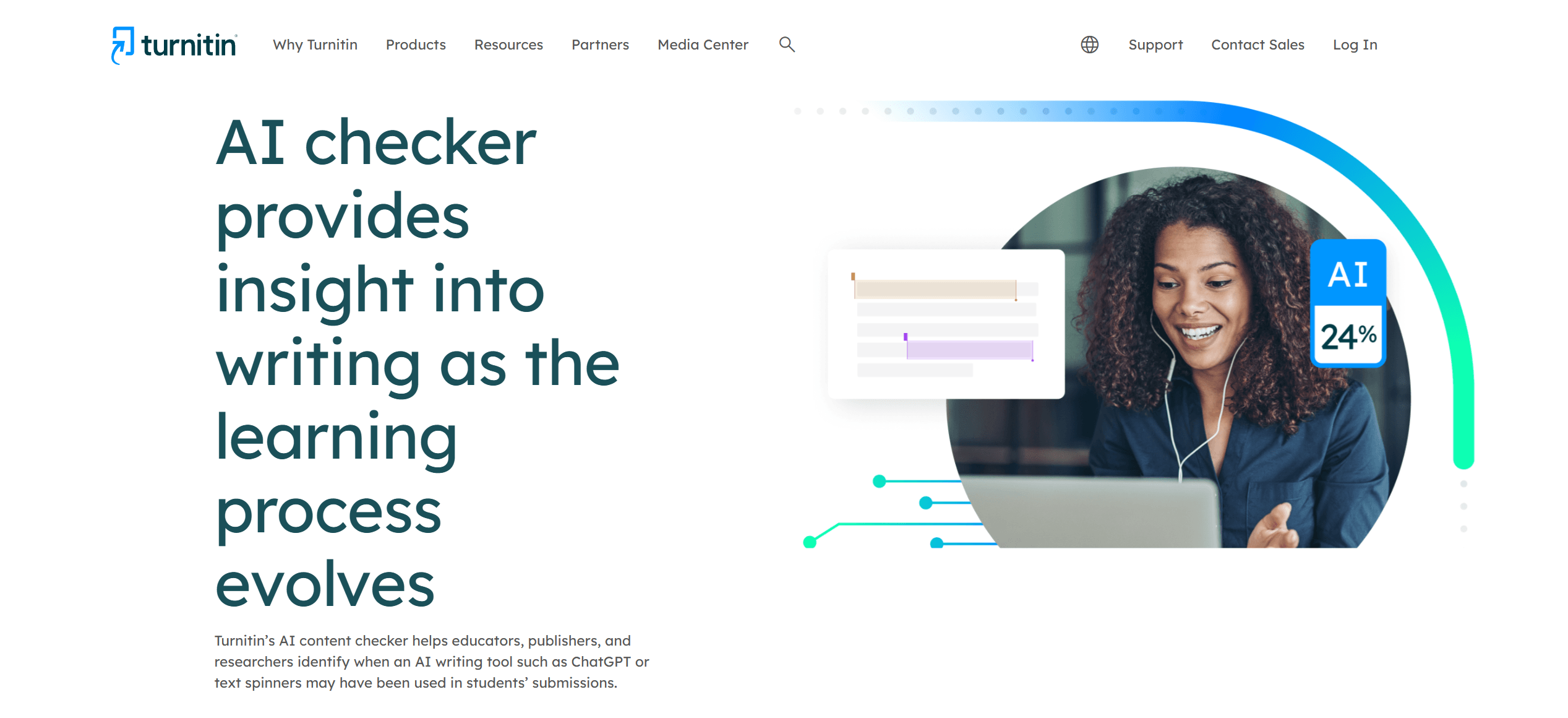
4. Copyleaks AI Detector
Copyleaks is a special AI detection tool and is geared toward academic and professional content. The tool also offers real-time analysis and multi-stage verification, making its results more reliable than what you can get from many other related tools. In addition, the tool supports multiple languages and AI models.
Pros:
- Real-time detection with multi-stage verification.
- Supports multiple languages and AI models.
- Plagiarism detection included.
- Its accuracy is also relatively high at 89.11% with a 5% false positive rate.
Cons:
- The free version offers limited scans.
- While it is considerably accurate, its accuracy is less than that of many other tools.
The tool is very good for academic editors and students who need quick, multi-language checks.
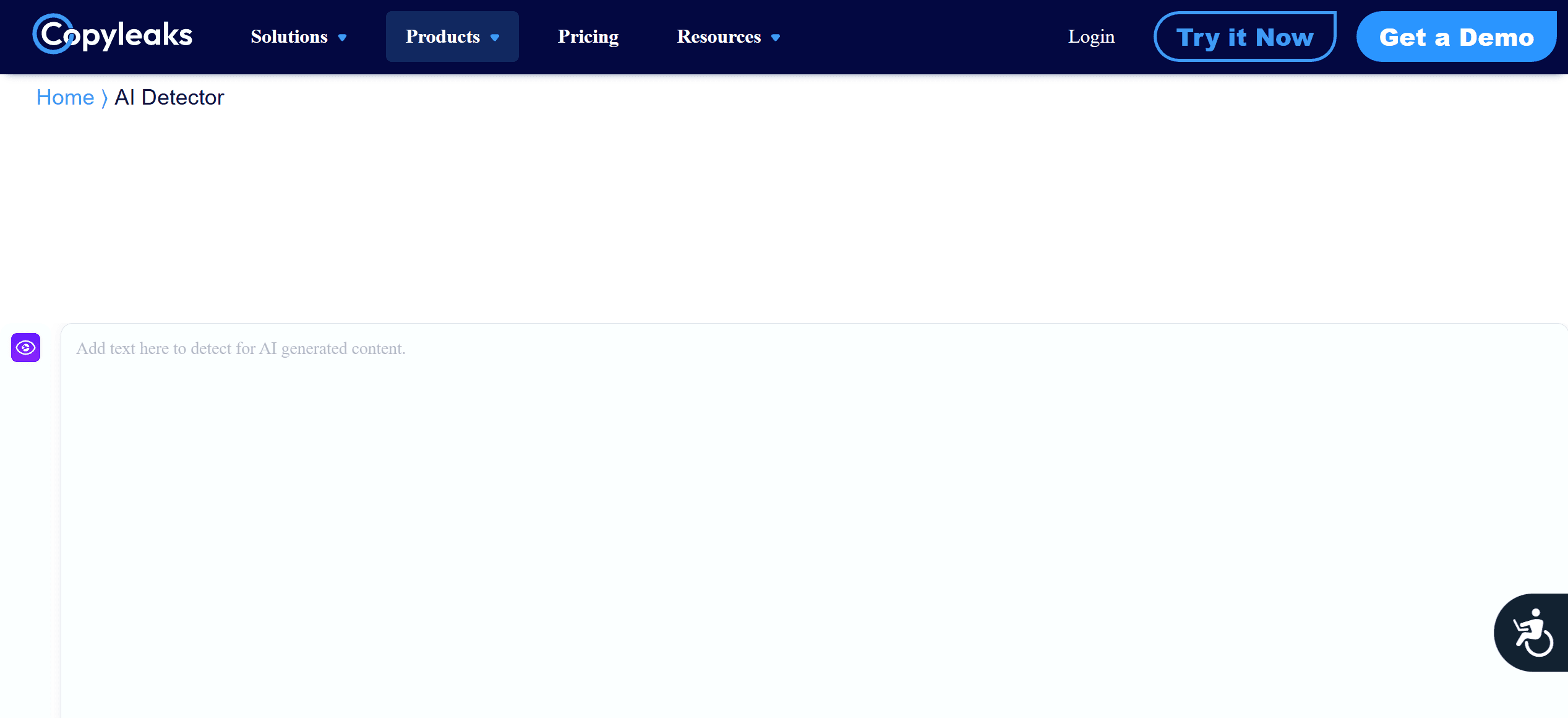
5. ZeroGPT
ZeroGPT is an outstanding ChatGPT detector. It detects Ai-contents by employing multi-stage analysis, ensuring its results are reliable. The tool also provides the end users with real-time feedback on so many AI models. Also, its straightforward interface makes the tool easily accessible for quick checks.
Pros:
- Multi-stage analysis for nuanced detection.
- Real-time feedback.
- Detects content from various AI models.
Cons:
- The tool has a free version, but the free version features are limited.
The tool is perfect for students who need fast, on-the-go AI detection. Its accuracy is high, but it also varies with content complexity.
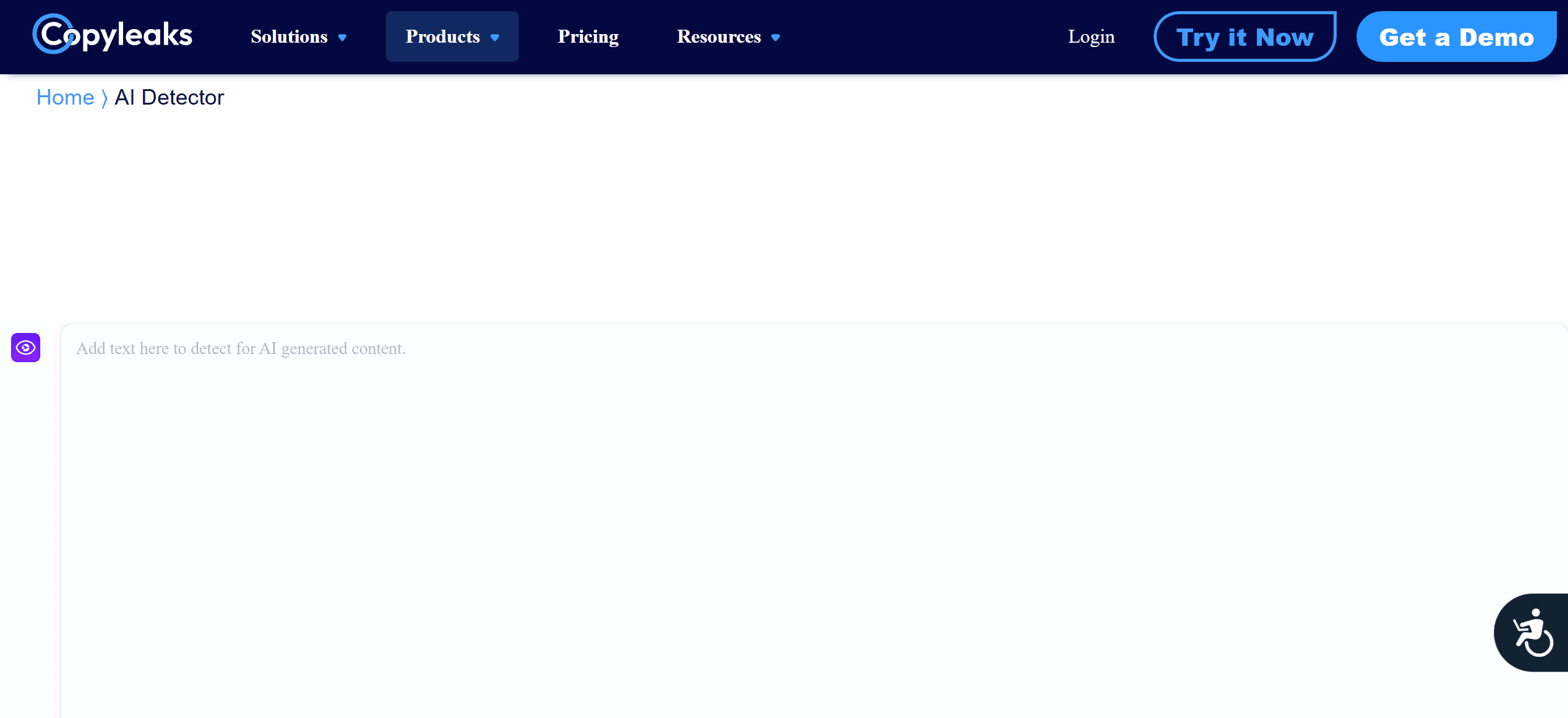
6. Originality AI
Originality AI is a highly reliable AI detection tool, and it is designed to stand out at detecting human-edited AI content. It is, therefore, especially useful for editors and educators concerned with subtle AI involvement. If any content is written using AI tools, you can trust this tool to detect it.
Pros:
- Specializing in detecting human-edited AI content.
- Offers detailed scoring and plagiarism detection.
- Sentence-by-sentence highlights.
Cons:
- Its free version’s functionality is limited to basic checks. The premium plans, on the other hand, offer more features that give value for money.
The tool is perfect for editors and educators handling sophisticated, edited AI texts. Its accuracy is up to 97% for AI-edited content.
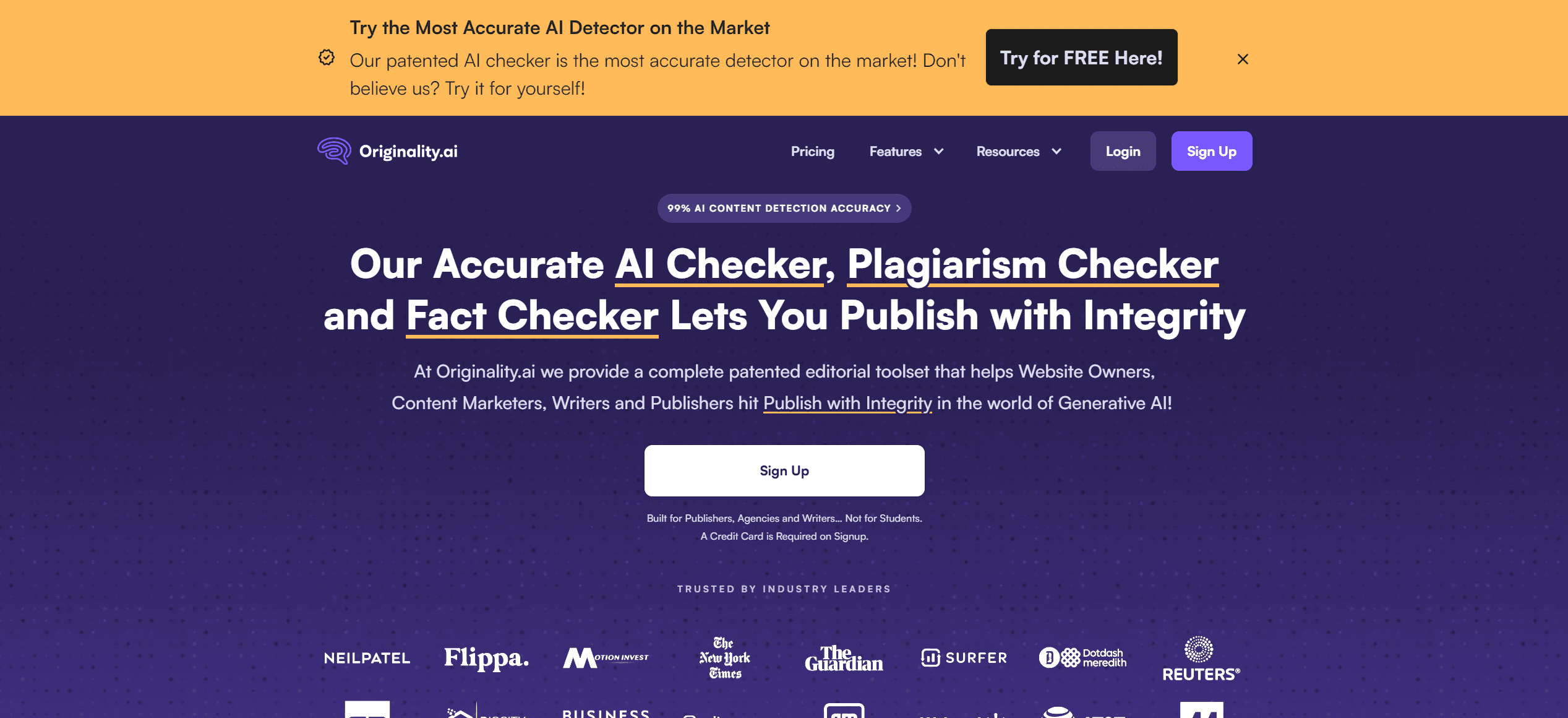
7. Hugging Face AI Detector
This tool is a part of the Hugging Face ecosystem and leverages advanced NLP and machine learning to assist in identifying AI-generated patterns. The tool is one of the best ChatGPT detectors for students and also has a unique adaptability to new models, which is one of its major strengths.
Pros:
- Uses advanced NLP for pattern detection.
- Adapts to new and evolving AI models.
- Integrates with Hugging Face’s broader AI tools.
Cons:
- You will experience usage limits in the free version.
The tool is perfect for tech-savvy users and researchers needing adaptable detection. Its accuracy is moderate, but it has adaptability to new AI models.
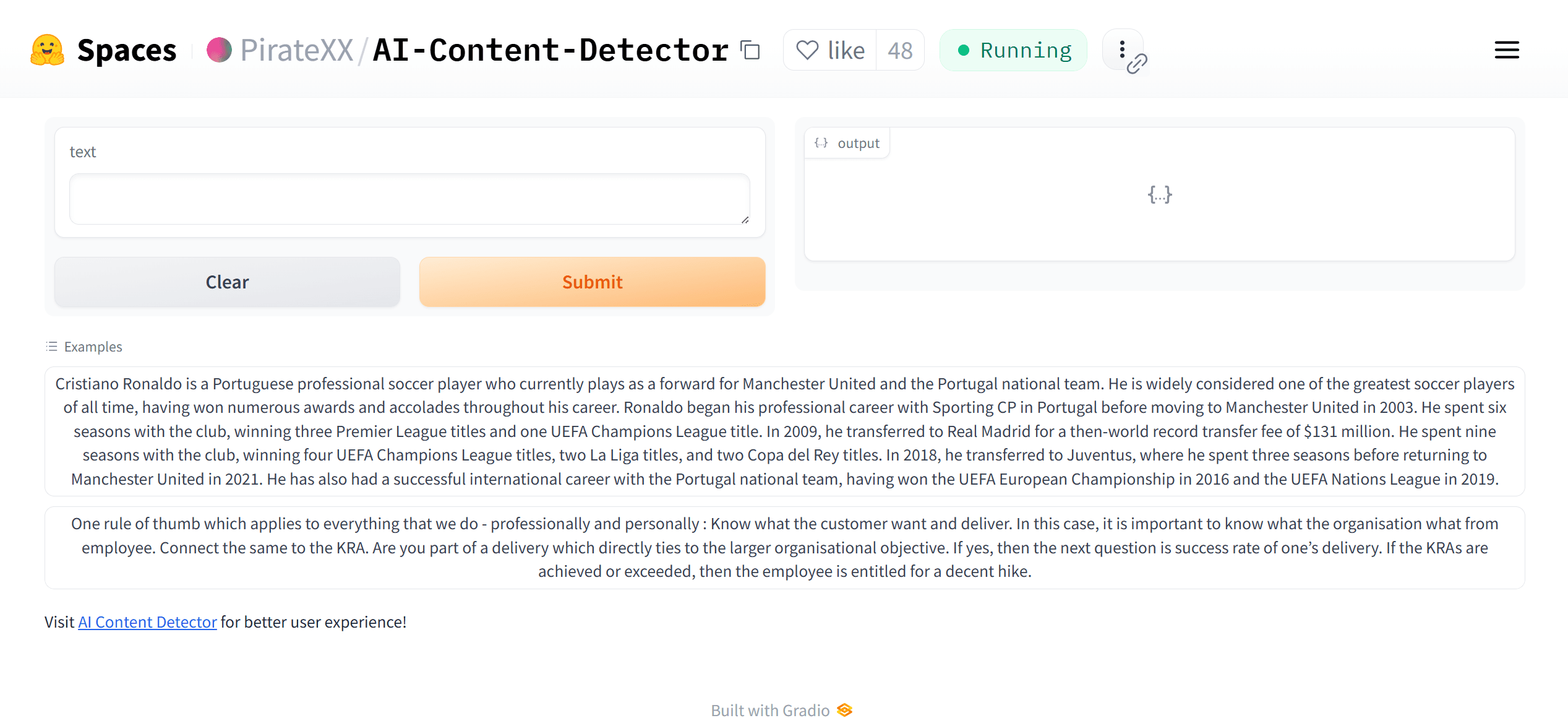
8. Sapling.ai
Sapling.ai is a unique AI detector designed for organization-wide checks. The tool offers enterprise-grade detection and collaboration tools. Its low false positive rate is a major advantage for professional environments.
Pros:
- Team collaboration and enterprise-grade detection.
- Designed for large-scale, organization-wide use.
- Low false positives.
Cons:
- Its free version does not have advanced features.
The tool is ideal for editorial teams and organizations with collaborative needs. Its accuracy is high, especially for professional workflows.
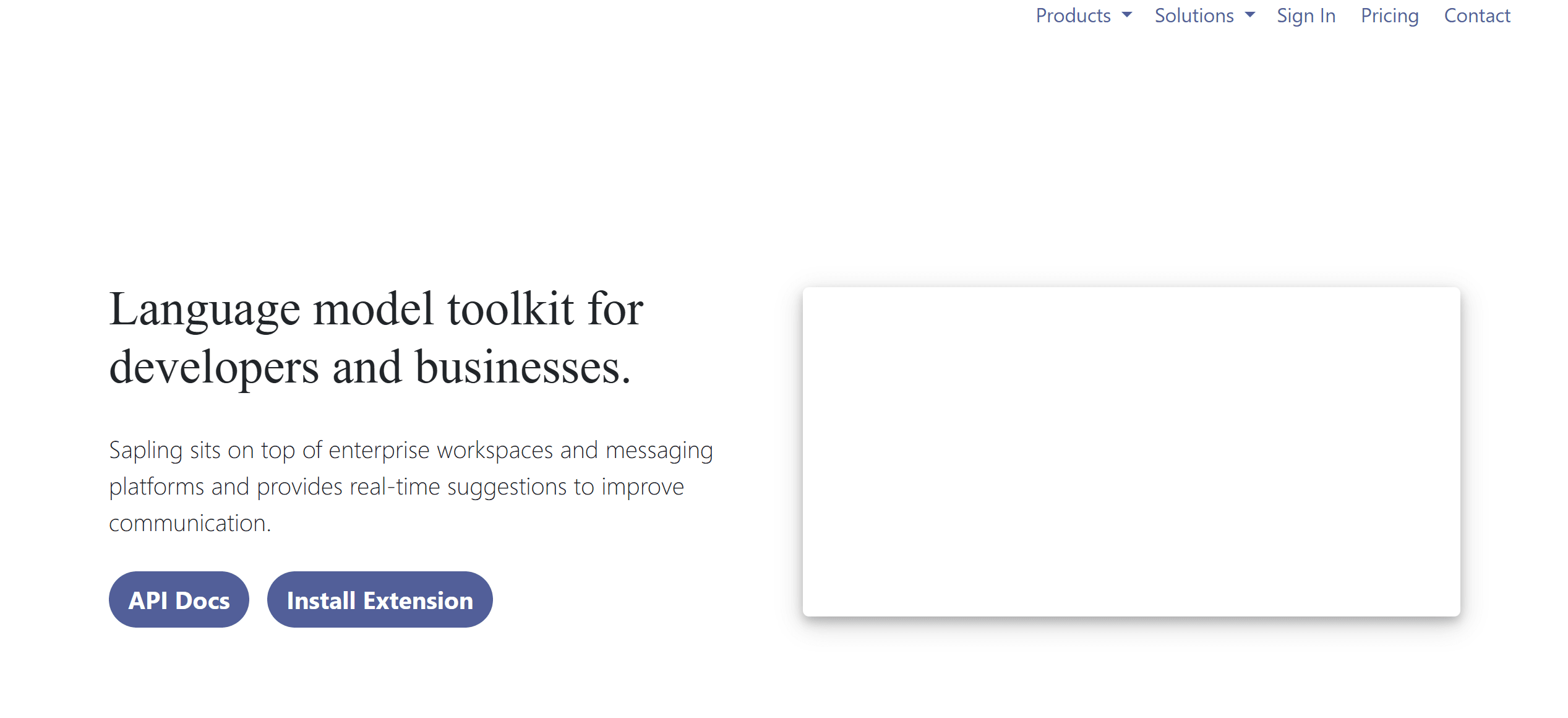
9. AI Text Classifier
AI Text Classifier is a basic, free tool that offers quick checks as a ChatGPT detector. Its accuracy is lower than other options, but the tool remains useful for simple, preliminary screening.
Pros:
- It offers basic detection for AI-generated content.
- It has a simple and fast interface.
Cons:
- Limited training data and lower precision.
The tool is ideal for casual users and students needing a quick, simple check. Its accuracy is 60%, which makes it less reliable for complex or nuanced content.
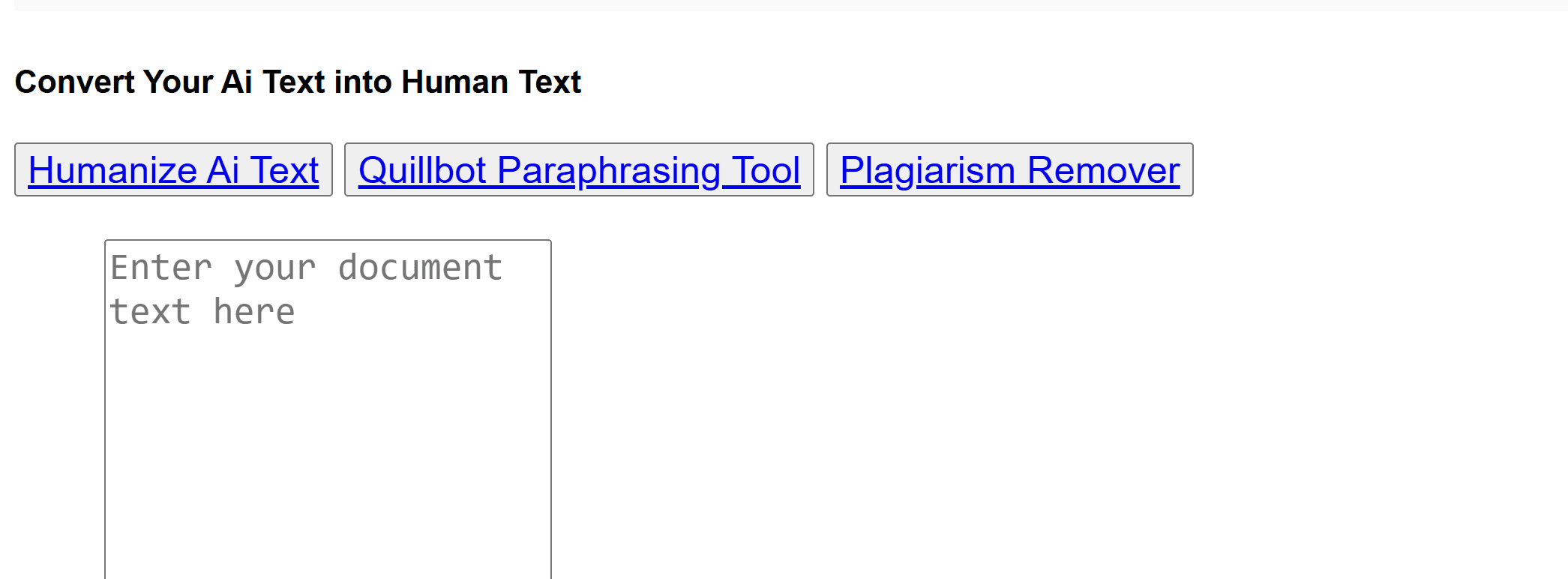
10. TrueText
TrueText offers a no-frills, free interface for basic AI content checks. It requires no registration and is suitable for straightforward use cases.
Pros:
- It has a simple interface; no registration is required.
- It offers basic detection for standard AI text.
Cons:
- Lacks advanced features and multi-language support.
The tool works perfectly for students and editors needing instant, basic detection without setup. Its accuracy is 76% for standard AI-generated content.
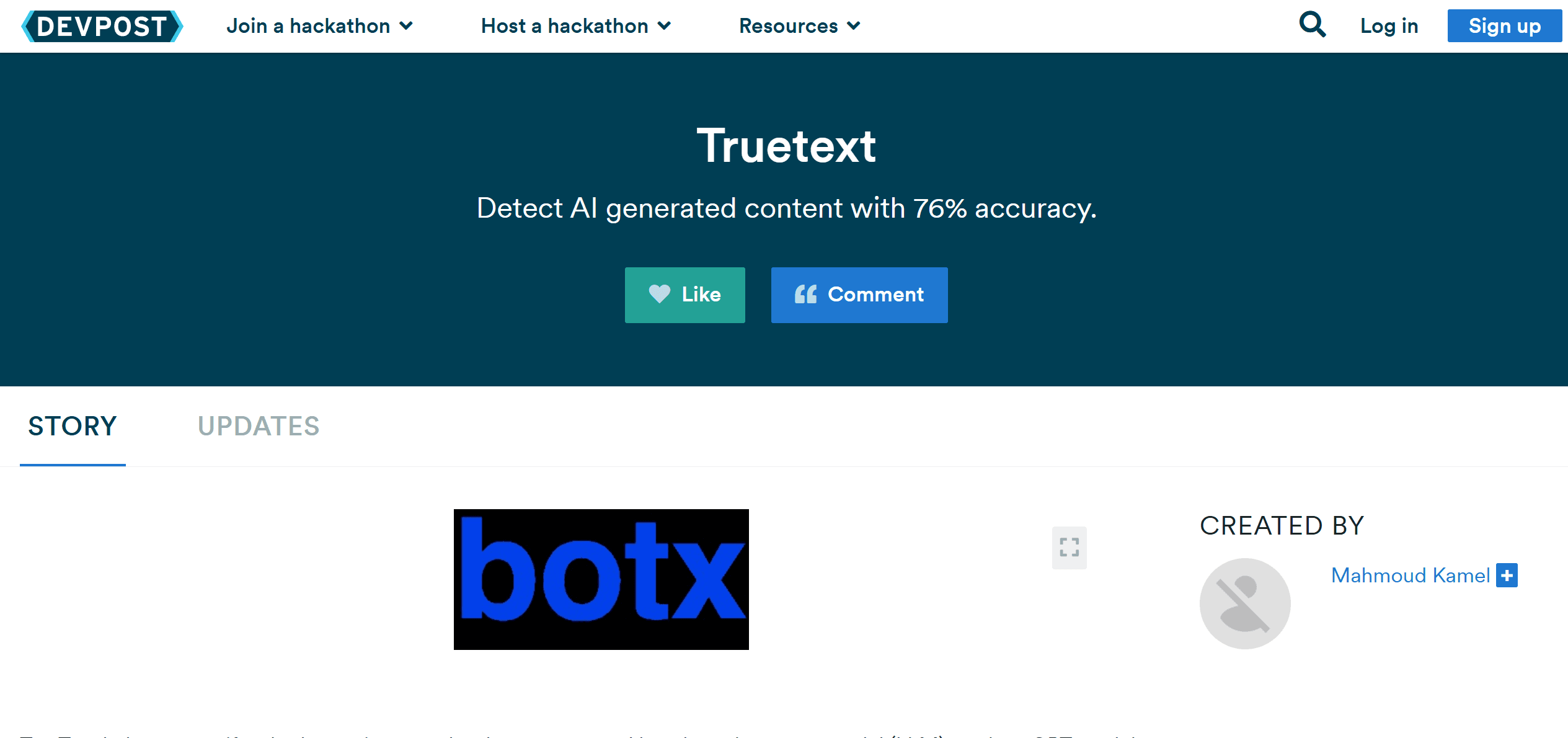
Comparison Table: Key Features and Accuracy
Detector | Free Plan? | Main Strengths | Accuracy | Limitations |
|---|---|---|---|---|
GPTZero | Yes | High accuracy, classroom integration, feedback | 98.6% | 10,000 words/month limit |
Detecting-AI.com | Yes | Color-coded highlights, detailed reports | 99% | No batch processing |
Turnitin | Institutional | Plagiarism + AI detection, confidence scores | 98–100% | Institutional access only |
Copyleaks | Yes | Multi-language, real-time, plagiarism | 89.1% | Limited free scans |
ZeroGPT | Yes | Multi-stage, real-time analysis | High | Limited features |
Originality AI | Yes | Human-edited AI detection, scoring | 97% | Basic checks only |
Hugging Face | Yes | Adaptable, advanced NLP | Moderate | Usage limits |
Sapling.ai | Yes | Enterprise tools, low false positives | High | Basic features in the free plan |
AI Text Classifier | Yes | Quick, simple checks | 60% | Lower precision |
TrueText | Yes | No registration, instant results | 76% | No advanced features |
How to Choose the Right Detector?
If you have never used ChatGPT detectors for students before and are unsure of how to pick the right one, the tips provided below will make the process very easy for you. The tips can work perfectly for both students and editors alike.
For students:
- You should prioritize tools that have high accuracy and feedback, like GPTZero or Detecting-AI.com.
- It is also advisable to use Turnitin if your institution provides access to integrated plagiarism and AI checks.
- If you need quick, basic checks, either AI Text Classifier or TrueText should work just fine for you.
For editors:
- You should choose a ChatGPT detector that offers detailed reporting and multi-language support, such as Copyleaks or Sapling.ai.
- If you are dealing with human-edited AI content, Originality AI is highly effective.
- You should also consider Undetectable AI for cross-tool analysis and refining content; this helps to avoid false positives.
Limitations and Best Practices
You should always bear in mind that no detector is perfect. Even the best tools can produce false positives or negatives, especially with heavily edited or hybrid content. So, not all flagged content is AI-generated. It is also advisable to combine tools, especially when you are dealing with critical documents. Using multiple detectors will improve cross-verification.
In addition, a manual review of the content must not be overlooked. You should always pair your preferred AI detection tool with human judgment, especially when dealing with high-stakes academic or editorial content. You should always stay updated to enable you to make the right choice among ChatGPT detectors for students. This is because AI models and detection tools evolve rapidly, and you can be in the know of the latest developments by regularly checking for updates or new features.
Consistency in detection practices and transparency with stakeholders, especially in academic settings, can help maintain trust and credibility when using AI detection tools to evaluate potentially machine-generated content.
Conclusion
The informative write-up above would have opened your eyes to the top tools to consider when choosing a ChatGPT detector. The landscape of AI detection is evolving as quickly as the AI writing tools themselves, and you should always research before choosing among them. Each of the tools discussed above is great but you should go through the pros and cons before choosing any of them so that you can obtain the best possible results. As mentioned earlier, you should avoid relying solely on AI detectors lest you wrongly condemn content as AI-generated. This is because there are rarely any AI detection tools that are 100% reliable.
Finally, if you need to modify your PDFs or create one before generating Brainrot content, download PDF Agile. Also, you can find more interesting knowledge articles in Knowledge | PDF Agile.

